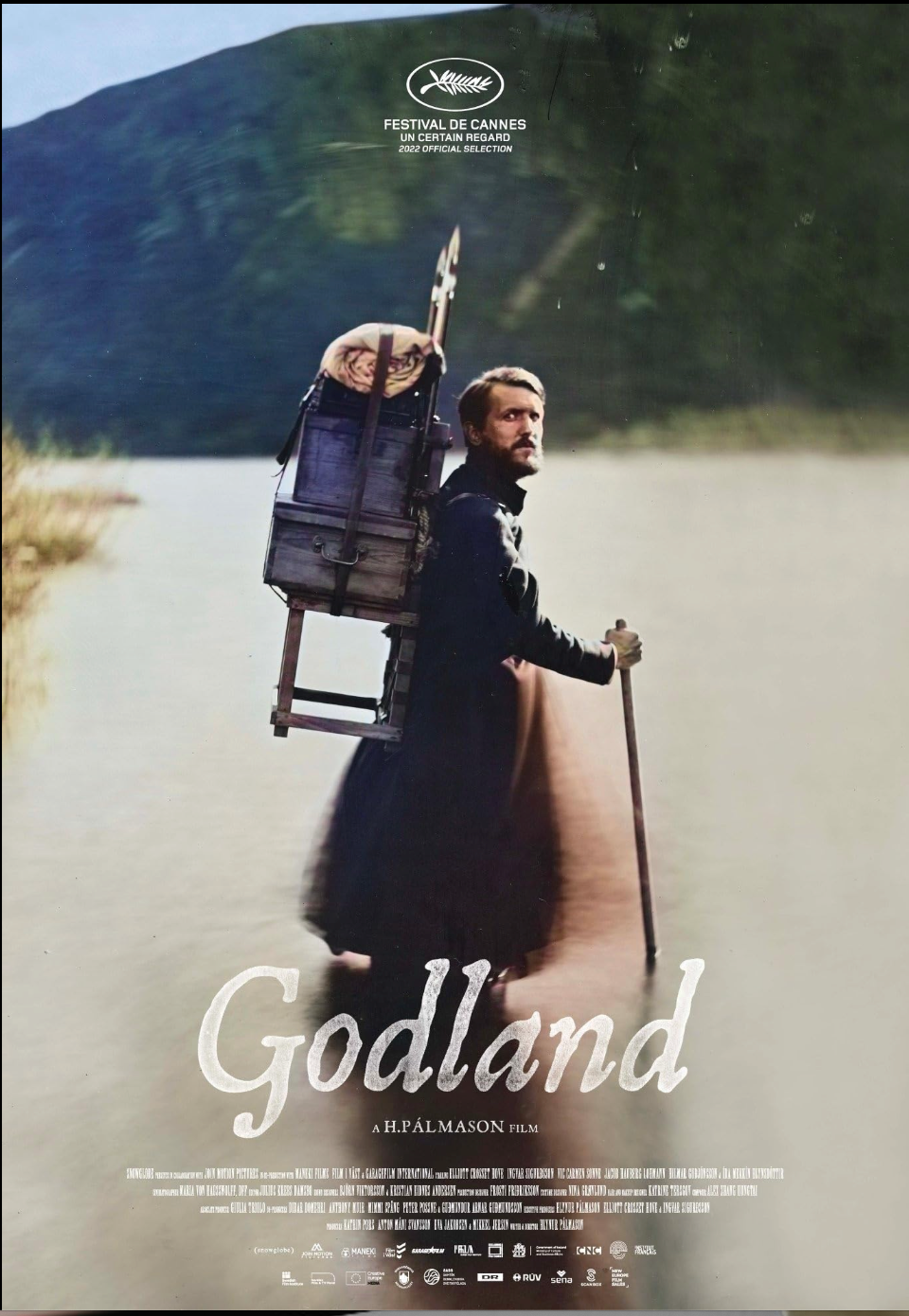Movie Review: Godland
- Gay Strandemo

- Jul 19, 2025
- 2 min read
Reviewed by Gay Strandemo

The nearly three-hour Icelandic feature film Godland (Icelandic: Volaða land,) has themes of faith against the muscle of nature, modernity versus tradition, the temptations of the flesh against the sanctity of ordination, and the effects of colonization between Denmark and Iceland during the late nineteenth century.
Godland’s plot is focused on a young Lutheran Danish priest named Lucas who is sent to Iceland to build a new church. He is warned by his superior that “you must adapt or your work will come to nothing.” On the ship’s journey to Iceland his dual Icelandic/Danish speaking translator teaches him Icelandic words for the “many ways to describe bad weather,” and Lucas shivers through them. When later circumstances on the journey take his bilingual translator from him, Lucas is unfortunate not only in adapting to the harshness of the terrain and weather, but also left isolated in communicating with his traveling entourage.
The Icelandic guide Ragnar, who is hired to lead Lucas through rough paths to the building site of the new church, shows immediate distrust toward the priest, muttering under his breath, “Danish devil.” Ragnar seems to have his own religious rituals in a dawn dance of precise movement and in his chant-like singing as the caravan moves along. He does not like to see the priest riding a good horse the wrong way, and he finds the amount of ecclesiastical baggage an unnecessary encumbrance. “Saw the cross in half,” he says as the huge cross teeters on the back of a horse. Ultimately, Lucas cannot brave a nature more powerful than faith and temporarily unravels into a coma-like state, unable to travel under his own power, and is brought to recover in a house owned by a Danish merchant near the church’s building site. All goes well for a while until his faith and composure are strained to the limit again.
Lucas the priest is also an avid wet plate photographer, and one of the marvels of this film are the portraits he takes of the ship’s crew, translator, and the merchant’s daughters. The center framing style of filming is prevalent throughout the film and is a style preference for the film’s cinematographer, Maria von Hausswolff, who has worked with the film’s director, Hlynur Pálmason on three of his films. The stunning cinematography was shot on 35 millimeter film in often painstaking labor.
According to the director, the film’s narrative unfolded organically, with certain things in mind while other ideas came into play later. He likes to work with “visual diaries” that inform the later finished product, for instance taking time-lapsed shots of a dead decaying horse over a year’s time that are used at the movie’s end.
The film Godland has powerful impact, owing to its thoughtful visual narrative, eerily evocative soundtrack, and strong acting throughout. It has been nominated for many awards.
Source
1"Godland." IMDB. Retrieved from https://www.imdb.com/title/tt19623228/ : 28 May 2025



